Gazebos are great, but bird invasions? Not so much. While these structures offer a perfect outdoor retreat, birds can quickly turn them into a messy nuisance.
From unsolicited nests to a barrage of droppings, bird problems in gazebos are a real headache for many owners. It’s not just about cleanliness; there’s the noise, damage, and even health concerns to consider.
But, how to keep birds out of the gazebo? Is this even possible?
Feeling overwhelmed? Don’t fret. This article cuts to the chase, laying out the essential strategies and practical tips to effectively keep birds out of your gazebo.
Let’s tackle this together and get your gazebo back in top shape.
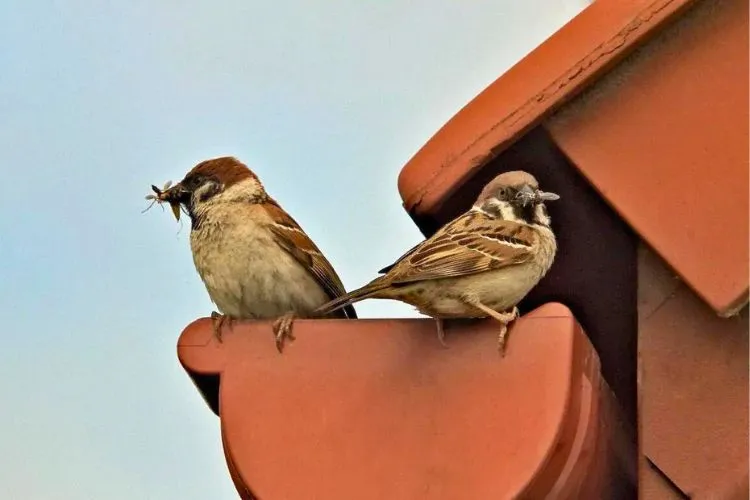
Why Are Birds Attracted to Gazebo?
It’s not just by chance that birds frequent gazebos. Understanding the factors that draw them in is the first step to effective deterrence. Let’s delve into the reasons behind their unexpected visits.
Why birds are drawn to gazebos?
Gazebos offer several attractions for birds. Firstly, the structure provides shelter from elements like wind, rain, and predators. The lattice work, beams, and ledges are perfect perches and nesting spots.
Additionally, if there’s food available—whether from plants nearby, crumbs left by humans, or even insects—birds will certainly take advantage. The serenity of a gazebo can also mimic the calm of natural habitats, making it an appealing rest stop for many bird species.
Common species of birds causing issues
Different regions will experience different bird “guests,” but some common culprits include sparrows, pigeons, starlings, and robins. Sparrows, for instance, are notorious for building nests in small crevices, while pigeons might be attracted to open rafters.
Knowing the species you’re dealing with can provide insights into their habits and preferences, giving you an edge in your deterrence efforts.
Potential damage and health concerns
Birds, while delightful in many settings, can bring a slew of problems to your gazebo. Their droppings not only mar the aesthetics but can corrode materials and pose a slip hazard. Over time, accumulated droppings can also foster the growth of harmful bacteria and fungi.
Nesting materials, if left unchecked, can clog gutters or become fire hazards. Additionally, some birds can carry mites or diseases, turning a relaxing gazebo setting into a potential health risk.
Preventative Measures
Before diving into reactive solutions, it’s beneficial to consider preventative steps. By making your gazebo less inviting to birds from the start, you can often sidestep many of the common issues altogether.
Let’s explore foundational measures to make your gazebo a less appealing target for our feathered friends.

Choose bird-unfriendly materials
When planning or upgrading a gazebo, the choice of materials can play a significant role in determining how attractive it is to birds.
Gazebo Roofing Considerations
The roof is often a primary landing spot for birds. Opting for a slick, smooth surface can deter them as they find it difficult to grip. Metal roofing, for instance, is not only durable but also offers less traction for birds compared to shingles or wood.
The reflective properties of certain metals can also discourage birds, as the glare can be off-putting. If you’re keen on shingles, consider those with a rough texture; they can be uncomfortable for birds to perch on for extended periods.
Siding and Structure Options
The sides of your gazebo also matter. Lattices, though aesthetically pleasing, can be welcoming sites for nests. If you’re keen on having that design element, opt for narrower gaps to prevent larger birds from getting through or nesting. Alternatively, consider solid sidings made of materials like vinyl or composite.
Not only do they offer longevity, but they also present fewer opportunities for birds to roost. In terms of the gazebo’s structure, avoid horizontal ledges or wide flat surfaces, as these are favorite perching spots. Implementing designs with more angles and fewer flat resting places can naturally deter birds from settling.
Maintain cleanliness
A clean gazebo is less enticing to birds, primarily because it signals a lack of available resources. By ensuring that your gazebo remains clean and free from debris, you’re actively reducing its allure to winged visitors.
Regular Cleaning Routines
Set a schedule to regularly sweep and clean your gazebo. This not only keeps the area looking fresh, but it also helps you identify and address early signs of bird activity. Cleaning up bird droppings promptly will make the gazebo less inviting and prevent potential health risks.
Furthermore, regular maintenance ensures that no food sources, like fallen fruits or leftover picnic crumbs, remain as an open invitation.
Proper Disposal of Bird-Attracting Debris
If you eat or snack in your gazebo, ensure all food remnants and wrappers are discarded properly in sealed bins. Even small morsels can attract birds. Similarly, if your gazebo is near fruiting trees or plants, regularly clear fallen fruits or seeds, as these are natural bird magnets.
Remove Nesting Materials
Birds are opportunistic, and they’ll often utilize readily available materials for nesting. Regularly inspect your gazebo for any stray twigs, leaves, or other materials that birds might use. If you notice the beginnings of a nest, remove it immediately. However, always check the legal guidelines in your region—some birds are protected, and disturbing active nests might be prohibited.
Position your gazebo thoughtfully
Where you place your gazebo on your property can influence the likelihood of bird visits. Being mindful of your gazebo’s location in relation to the natural environment can proactively deter birds from seeing it as a prime spot.
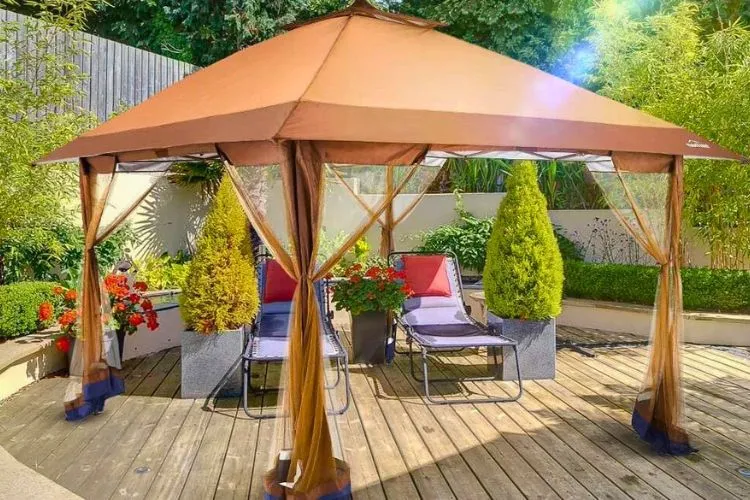
Avoiding Nesting Sites
Survey your property for existing bird activity. If you notice trees with frequent bird nests or specific areas that birds frequent for food or water, it’s wise to position your gazebo away from these hotspots. The further the gazebo is from popular bird hangouts, the less likely it is to become a new venue for them.
Strategic Placement to Deter Bird Access
Think about natural deterrents when placing your gazebo. For example, if your region is often windy, place your gazebo in a location where it’ll get the most wind exposure. Birds prefer calm areas to ones buffeted by winds.
Similarly, placing your gazebo in open sunlight, away from shady trees, can make it less inviting for birds seeking refuge from the sun. Another tip is to keep it away from bird feeders or birdbaths – while these are great for observing birds, having them too close can inadvertently invite them into your gazebo.
How to Keep Birds Out of the Gazebo? (Only Working Methods Discussed)
Despite our best preventative efforts, sometimes birds still find their way into our gazebos. Don’t fret; there are tried and tested methods to reclaim your space. From physical barriers to habitat modifications, let’s dive into the most effective strategies to ensure your gazebo remains a bird-free sanctuary.
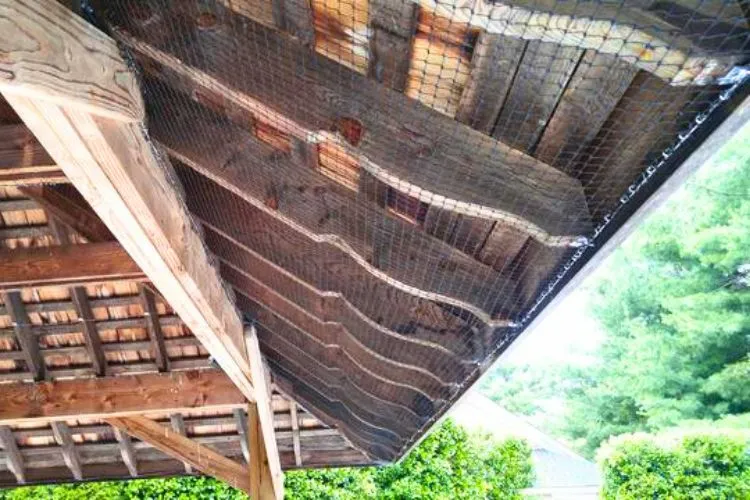
By Using Physical Barriers
Physical barriers serve as immediate deterrents, preventing birds from accessing or settling on your gazebo. These methods, while direct, can be both effective and humane if installed correctly.
Netting and Mesh
Types of Bird Netting: Bird netting comes in various types tailored for different purposes. The most common types include:
- Polyethylene netting: This UV-resistant netting is durable and can last for several years. It’s lightweight and often used for protecting larger areas like gardens, but can also be adapted for gazebos.
- Polypropylene netting: A bit more rigid, this is great for areas that might face more external stress or need additional tautness.
- Knotless poly netting: Offers a smooth finish, making it less noticeable and aesthetically pleasing for gazebos.
Installation Tips: Ensure the netting is taut to prevent birds from getting trapped.
- For aesthetic purposes, choose a color that blends with your gazebo’s structure.
- Regularly inspect for wear and tear, especially after severe weather.
Spike Strips
How They Work?
Bird spike strips are rows of upward-pointing spikes that can be fixed to flat surfaces. They deter birds by making it uncomfortable for them to land or roost.
Installation Techniques
- Ensure the surface is clean and dry.
- Use a strong adhesive or screws to secure the strips.
- Place them on known perching points like gazebo ledges or beams.
Decoys and Visual Deterrents
Owl Decoys
Owls are natural predators to many smaller birds. An owl decoy can act as a scare tactic. For effectiveness:
- Move the decoy regularly so birds don’t become accustomed to a static figure.
- Ensure the decoy is visible from a distance.
Reflective Objects
Birds dislike shiny, reflective surfaces as they can be disorienting. Hanging items like reflective tape, old CDs, or specially designed bird-repellent discs can keep them at bay.
Gazebo Modifications
Screening and Enclosure Options
Adding screens not only deters birds but also provides added protection against insects. Consider retractable screens for flexibility, or fixed mesh screens for a more permanent solution.
Bird-proofing Structural Alterations
- Sloping the outer ledges of your gazebo can prevent birds from finding a comfortable spot to roost.
- Opt for materials that birds find unattractive or difficult to grip. As mentioned earlier, slick surfaces or materials with rough textures can be deterrents in themselves.
By Using Natural Deterrents
Choosing natural deterrents offers a less intrusive and often more visually pleasing approach to keeping birds away from your gazebo. They work by leveraging nature’s own tools to gently guide birds elsewhere without causing harm.
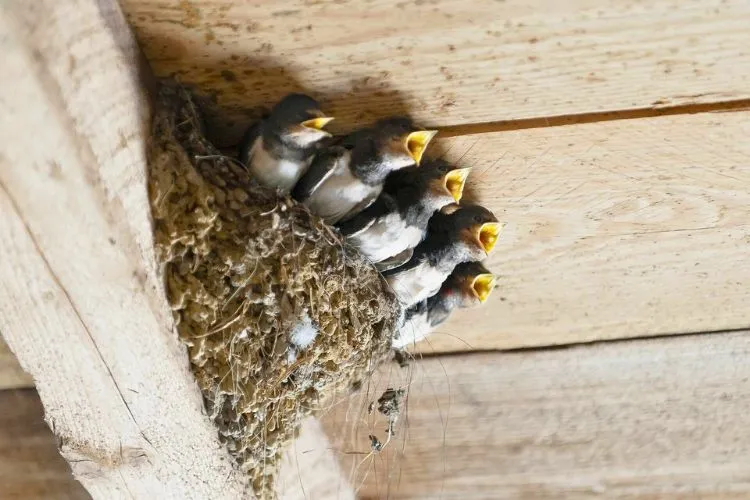
Plants and Landscaping
Bird-repelling Plants
Certain plants emit scents or have characteristics that birds find unpleasant. Incorporating these around your gazebo can act as natural deterrents. Examples include:
- Marigold: Not only are they colorful, but their strong scent repels many pests, birds included.
- Lavender: This fragrant herb can deter birds with its strong aroma.
- Peppermint: Its sharp scent can be off-putting for our feathered friends.
Landscaping Techniques
- Tall grasses: Planting these around your gazebo can make the ground less appealing for birds searching for insects.
- Thorny bushes or plants: Placed strategically, they can discourage birds from approaching.
Sound and Scare Tactics
- Wind Chimes and Bells: The gentle tinkling of wind chimes or bells can disturb birds enough to keep them away. Place them around the perimeter of your gazebo to deter potential roosting.
- Ultrasonic Bird Repellents: These devices emit high-frequency sounds, usually undetectable to human ears, that birds find uncomfortable. While effective, make sure to research and choose devices that are humane and don’t cause undue stress to birds.
Bird-Friendly Alternatives
- Birdhouses and Feeders Placed Away from the Gazebo: While it may seem counterintuitive, setting up bird-specific areas away from your gazebo can be an effective diversion. Birds will naturally flock to where food and shelter are readily available.
- Diversionary Feeding Areas: Set up feeding stations at a distance from your gazebo. Birds will likely choose the easy food source over exploring your gazebo. Use seeds or grains, and keep these areas clean to avoid attracting unwanted pests.
By Using Habitat Modification Method
Habitat modification aims to change the environment around your gazebo, making it less inviting for birds without causing them harm. By reducing the attractions, we can gently guide birds away from the gazebo area.
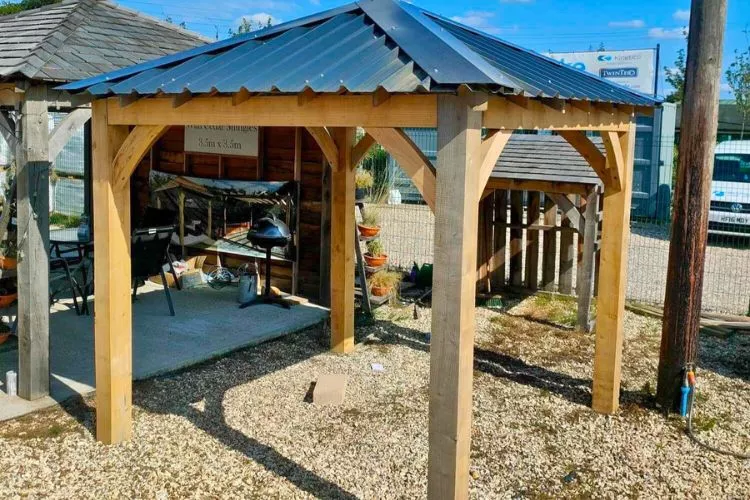
Removing food sources
One of the main reasons birds frequent certain areas is the availability of food. Ensure there are no open trash cans, leftover food, or water sources near your gazebo. Using sealed bins and regularly clearing any fallen fruits or seeds from the vicinity will significantly reduce bird attraction.
Removing nesting sites
Birds look for quiet, sheltered areas to build nests. Regularly inspect your gazebo and its surroundings for signs of nesting. Clear out any loose materials like straw, twigs, or leaves that birds might use to build nests. Also, sealing off open areas or gaps in your gazebo structure can prevent birds from nesting inside.
Trim trees and shrubs
Thick foliage provides an ideal environment for birds to hide, nest, and seek food. By keeping trees and shrubs well-trimmed around your gazebo, you reduce the appeal for birds to settle in the area. Ideally, trees should be pruned so they don’t directly hang over the gazebo, preventing birds from hopping over easily.
Discouraging roosting
Roosting birds can create a lot of mess, especially when they gather in large numbers. Use roosting spikes or non-toxic roosting gels on the gazebo’s beams and other horizontal surfaces. These don’t harm the birds but make it uncomfortable for them to perch, encouraging them to find a different roosting spot.
Maintenance and Monitoring
Even the best preventive measures require periodic checks and updates to remain effective. Ensuring your gazebo remains bird-free is not just a one-off task. It’s an ongoing commitment that involves regular maintenance and vigilant monitoring. By doing so, you not only prolong the lifespan of your gazebo but also ensure a comfortable space free of unexpected bird-related issues. This section will guide you through the essential steps and routines to keep your gazebo in top shape and bird-free.
Regular inspection
Establishing a routine for regular inspections can make all the difference in the longevity of your gazebo and in keeping birds at bay. It’s all about being proactive rather than reactive. Here’s what to focus on during these checks:
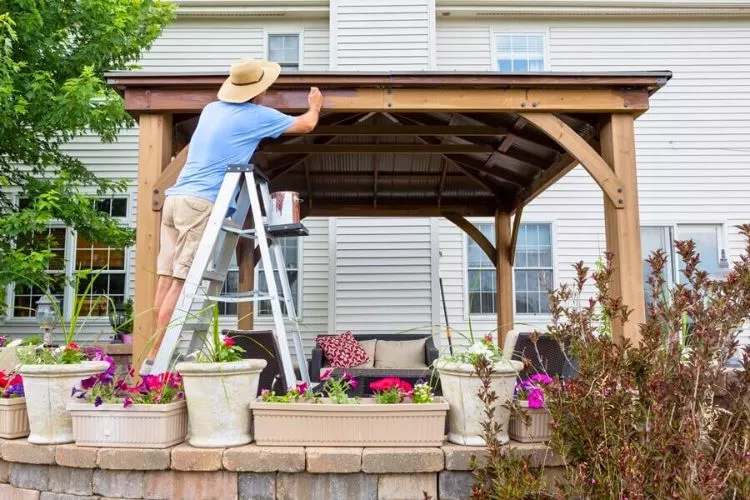
Checking for Damage
Over time, the elements can wear down even the most robust structures. Look out for any signs of wear and tear, especially in areas birds might find inviting. Holes or gaps in the roofing, broken mesh or netting, and loose or damaged siding can become entry points or nesting opportunities for birds. Addressing these damages promptly can prevent more significant problems in the future.
Reevaluating Bird Activity
Despite your best efforts, some birds might still find your gazebo attractive. During your inspections, pay close attention to signs of bird activity, such as droppings, feathers, or nests.
If you notice an increase in bird presence, it might be time to reevaluate and possibly adjust your bird deterrent strategies. Sometimes, merely changing the position of a decoy or adding a new deterrent can make a big difference.
Adjusting strategies
Bird behavior and patterns can change due to various factors, from seasonal migrations to changes in the local ecosystem. As such, it’s vital to stay flexible in your approach to keeping them away from your gazebo. Sticking to one method indefinitely might lose its effectiveness over time. Here’s how to stay ahead:
Modifying Deterrents
If you’ve been using a particular deterrent for some time and notice it’s not as effective as it once was, consider making some modifications. For instance, if you’ve placed owl decoys around your gazebo, try moving them to different locations periodically. Birds are intelligent creatures and might realize after a while that the decoy is harmless if it remains static for too long.
Trying New Approaches
While it’s essential to use proven strategies, it’s equally important to be open to trying new methods. Research the latest bird deterrent products in the market or consider consulting with professionals who might introduce you to newer, more effective strategies. If ultrasonic repellents aren’t doing the trick, maybe a combination of visual deterrents and landscaping changes might. Stay updated, stay adaptive.
DIY vs. Professional Help
Keeping birds away from your gazebo can sometimes feel like an ongoing battle, especially if you’re facing a persistent avian problem. While many homeowners manage bird issues effectively using DIY methods, there are moments when seeking professional advice or services might be the most efficient solution. Let’s weigh the considerations:

When to Seek Expert Advice?
- Persistent Infestation: If you’ve tried multiple methods and still find birds flocking to your gazebo, it might be time to consult an expert. They can offer insights into why your efforts might not be working and suggest alternative strategies.
- Safety Concerns: Birds, particularly larger species, can sometimes be aggressive, especially when defending a nest. If you feel that removing a nest or implementing a deterrent could put you at risk, it’s best to get a professional to handle the situation.
- Complex Installations: Some deterrents, like specialized netting or electrical systems, might require more intricate installations. If you’re unsure about doing it yourself, a professional can ensure it’s set up correctly and safely.
Hiring Pest Control Services
Professional pest control services are trained not only to address bird-related issues but also to do so humanely and ethically. They often come equipped with tools and knowledge to handle even the most stubborn bird infestations.
Plus, they can provide regular maintenance and checks, ensuring that once the birds are gone, they stay away. While there’s an associated cost, the peace of mind and effectiveness of the service often justify the expense.
Pro Tips
Navigating the challenges of keeping birds out of your gazebo can seem daunting, but with a few insider tips and a sprinkle of persistence, you can create an inviting space without the feathered interruptions.
- Consistency is key: Just as you wouldn’t clean your home once and expect it to stay spotless forever, your gazebo demands regular attention too. Birds are observant creatures. If they find a gazebo that’s consistently free of food and nesting materials, they’re less likely to make it their hangout spot.
- Combine deterrent methods: There’s no one-size-fits-all solution. It’s often a combination of physical barriers, natural repellents, and vigilant maintenance that proves most effective. Think of it as a multi-layered defense strategy.
- Be patient: Birds aren’t trying to be a nuisance; they’re just following their instincts. It might take some time before they get the message and alter their patterns. Stay the course, and with time, you’ll see results.
- Respect wildlife: In your quest to maintain a bird-free gazebo, it’s essential to remember that these creatures have their place in the ecosystem. Always choose methods that deter birds without causing them harm or distress.
- Consult experts when necessary: If you’ve tried multiple strategies and still can’t deter those persistent winged visitors, it might be time to call in the experts. Professionals can provide insights, specialized tools, and strategies tailored to your specific situation. Don’t let pride stand in the way of a serene gazebo experience.
Frequently Asked Questions (FAQs)
Are there any health risks associated with birds in gazebos?
Yes. Birds can carry diseases and their droppings can contaminate surfaces, posing health risks to humans.
How often should I clean my gazebo to deter birds?
Clean your gazebo at least once a week. Removing droppings and nesting materials regularly deters birds from settling.
Is it ethical to use decoys and scare tactics to keep birds away?
Ethics vary by individual. Using non-harmful decoys and scare tactics can be seen as humane if they deter without harming birds.
Can I use a bird feeder near my gazebo without attracting them to the structure?
It’s challenging. Placing a feeder close may attract birds to the area, increasing the likelihood they’ll explore the gazebo.
Are there any legal restrictions on bird control methods?
Yes, some regions have laws protecting certain bird species, limiting the control methods one can employ. Always check local regulations.
Conclusion:
In the quest for a bird-free gazebo, we’ve explored a range of effective strategies, from physical barriers to natural deterrents. The tranquility and joy of an undisturbed gazebo space are unmatched.
Yet, it’s essential to strike a balance, fostering harmony between our desires and the natural instincts of birds. We hope that this guide has been helpful. You can read about similar topics here on our website. Check back again soon for more.


